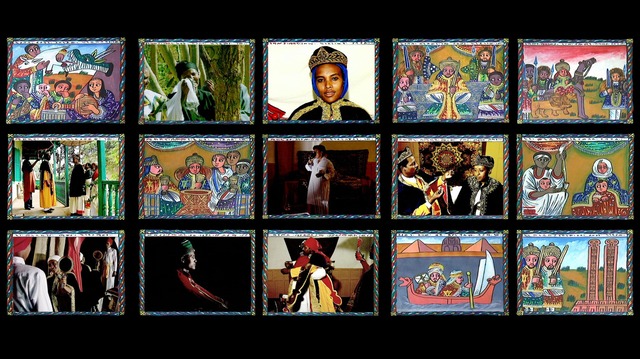 Theo Eshetu, The Return of the Axum Obelisk, 2009, Video, Collection of the artist, courtesy of The Met
Theo Eshetu, The Return of the Axum Obelisk, 2009, Video, Collection of the artist, courtesy of The Met
Tadias Magazine
Updated: February 23rd, 2024
New York (TADIAS) – The Metropolitan Museum of Art (MET) in New York is currently hosting its inaugural exhibition exploring the intersections between African and Byzantine art, with a significant focus on Ethiopia. In our ongoing interview series, we delve deeper into this topic with Dr. Andrea Achi, Curator of this groundbreaking exhibition at the MET.
TADIAS: What significance does Ethiopia hold within the context of this exhibition?
Dr. Andrea Achi: Ethiopia was closely connected to the Romans and Byzantines religiously, politically, and through shared artistic traditions. The Axum Empire became a Christian nation even before the Roman Empire. The Axumites were close political allies to the Byzantines, participating in proxy wars to help secure the Byzantine borders and remained close partners with the Byzantines for centuries.
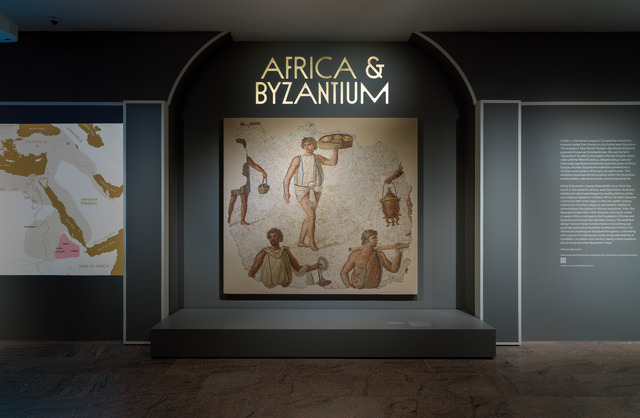
Installation view of Africa & Byzantium at The Metropolitan Museum of Art. Photo by Anna Marie Kellen, courtesy of The Met
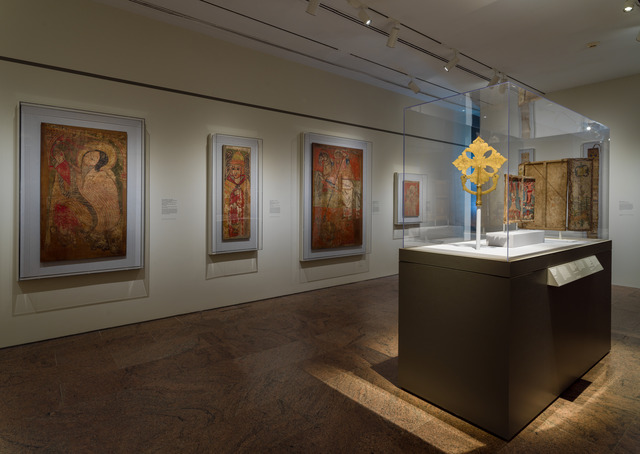
Photo by Anna Marie Kellen, courtesy of The Met
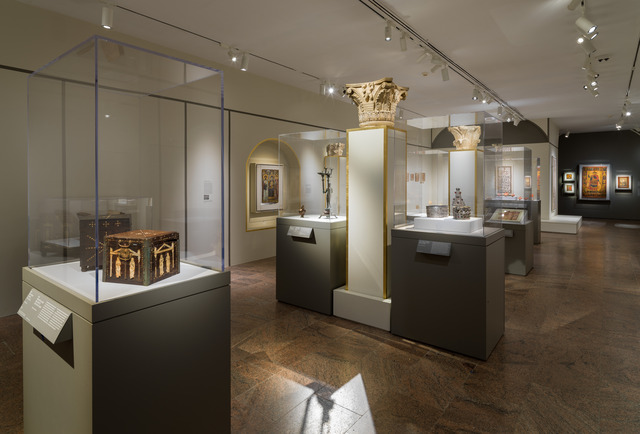
Photo by Anna Marie Kellen, courtesy of The Met
TADIAS: Could you elaborate on Ethiopia’s rich artistic and cultural heritage and how the exhibition redefines conventional perceptions of Byzantium and Africa, particularly in its portrayal of Ethiopian art and culture?
Dr. Achi: Africa & Byzantium showcases Ethiopia’s rich artistic and cultural legacy extending over nearly two millennia. The Aksumite city of Adulis connected the Mediterranean trade with the Red Sea and the Indian ocean, facilitating transregional exchange. From there, the Axumites exported locally made objects such as worked glass, ivory, and metal, which circulated throughout the Mediterranean basin.
By beginning with Roman North Africa and ending with Ethiopia, Africa & Byzantium situates Ethiopian art and culture directly within the context of Byzantine artistic legacies. Previous exhibitions of Ethiopian art, particularly in the United States, have rightly focused on tracing the history of Ethiopian visual and material culture across the centuries. Africa & Byzantium places Ethiopian art in conversation with the artistic traditions of neighboring regions in East Africa, including Nubia and Egypt, demonstrating not only the liturgical concordances between these area through their shared Orthodox faith, while also encouraging the visitor to draw visual parallels between these artistic traditions. Although Ethiopia was never formally part of the Byzantine Empire, this context is important to further understand Ethiopia’s global connections with the regions that were within the domain of Byzantium, such as Egypt. It also complicates our understandings of the art of Byzantine Egypt and North Africa – rather than seeing the artistic tradition of these regions as a monolith, seeing these various regional artistic legacies in the same space encourages our audience to highlight the differences as well as the similarities between these distinct, yet related, visual expressions.
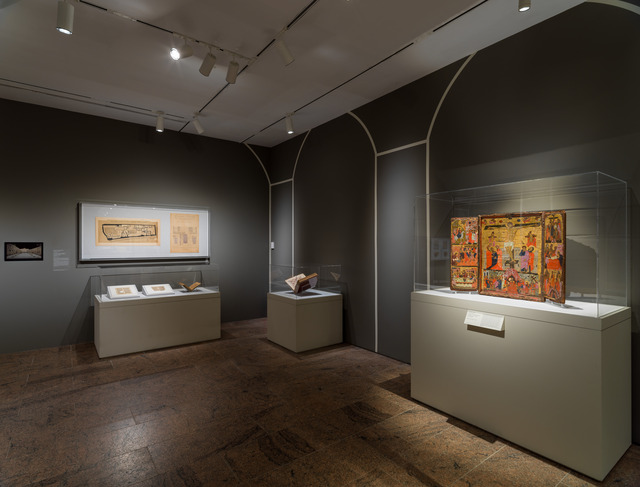
Photo by Anna Marie Kellen, courtesy of The Met
TADIAS: The discussion among the featured contemporary artists, including Tsedaye Makonnen and Theo Eshetu, reflecting on the exhibition was truly captivating. Given the exhibition’s exploration of the lasting impact stemming from interactions between North Africa, Egypt, Nubia, Ethiopia, and Byzantium, could you provide further insights into how these artistic exchanges have shaped contemporary artistic practices?
Dr. Andrea AchI: Many of the Christian communities of North Africa, Egypt, Nubia, Ethiopia, and Byzantium are linked through their shared Orthodox faith, which shaped these region’s artistic traditions. In Africa & Byzantium, we see artists responding to this legacy, such as with Tsedaye Makonnen’s light sculptures, which feature incised forms of Ethiopian crosses on their modular structures. Other artists, such as Azza El Siddique, who is Sudanese-American, are thinking about how these cross-regional connections are shaped through shared ritual practices, such as through her work on Nubian and Egyptian perfume and scent. As a result of their shared geography, many of these regions also experienced colonial occupation, which profoundly affected how medieval art and heritage from the region is viewed and understood. In his work in the exhibition, The Return of the Axum Obelisk, and others, Theo Eshetu is reflective of this legacy: his work directly considers issues of provenance, repatriation, and cultural heritage, which are front of mind for many of the nation states that are in the regions of North Africa, Egypt, Nubia, and Ethiopia. These regional colonial histories have also in part resulted in the migration of these communities to North America and Europe – many of these artists hold dual nationalities. Tsedaye and the Ethiopian-American artist Tariku Shiferaw are also thinking about this history of immigration, and Shiferaw’s work deals with what it means to exist as an immigrant in the West, and how to fit this explicitly transnational practice within the canon of Western art history.
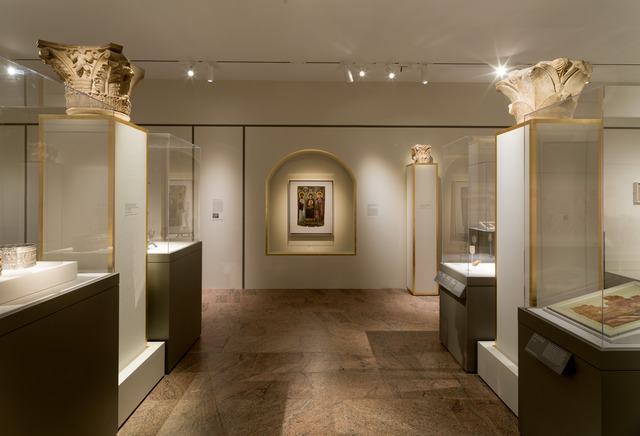
Installation view of Africa & Byzantium at The Metropolitan Museum of Art. Photo by Anna Marie Kellen, courtesy of The Met
TADIAS: Lastly, for those unable to attend the exhibition in person, are there alternative avenues for accessing its content?
Dr. Andrea AchI: The exhibition is accompanied by a richly illustrated catalogue available for purchase, featuring the research of over forty contributors spanning from the subfields of medieval art history, history, archaeology, and literary criticism. Photographs of the exhibition’s objects are included in the catalogue, accompanied by scholarly texts. A virtual tour of the exhibition, led by the show’s curator, is also available online. Other digital offerings on the museum’s website include the exhibition’s full audio guide, as well as photography of the exhibition objects with accompanying explanatory text. These are arranged in order of their display in the galleries to best simulate the in-person visitor’s experience.
Special thanks to Michelle Al-Ferzly at the MET for her assistance with the Q&A.
Video: Exhibition Tour—Africa & Byzantium | Met Exhibitions
If You Go:
Next week, the MET will present Tsedaye Makonnen for a “site-specific performance that journeys through the history of the Byzantine Era’s African diaspora.” This show coincides with the display of her Astral Sea textiles as part of The Met’s Africa & Byzantium exhibition.
—-
Related:
Join the conversation on Twitter and Facebook.

























